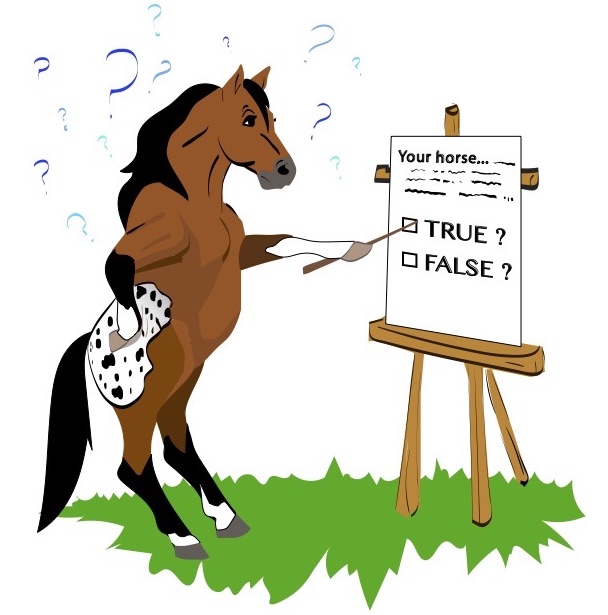
1. What are carrot stretches?
A) A way to make that bag of your horse’s favorite treat last through the end of the week.
B) Movements that increase the flexibility and range of motion in your horse’s neck and back.
C) Yoga you can do on horseback to increase the flexibility of your hamstring and quadriceps.
2. True or false: If hind-limb discomfort is the root cause of a horse’s crooked tail, chiropractic manipulation may help result in a straighter tail carriage.
T / F
3. A horse with a sore back might benefit from which alternative health therapy?
A) acupuncture
B) acupressure
C) both A and B
4. True or false: If you find the right alternative-health practitioner, he or she can substitute for your veterinarian in providing advice in that realm of your horse’s care.
T / F
HOW’D YOU DO? (Answers below.)
1. B is correct. Carrot stretches occur when you use the lure of a carrot to guide the head and neck of your horse in ways that increase the flexibility and range of motion in his neck and back. (Learn how to do carrot stretches for horses.)
2. T is correct. A crooked tail carriage isn’t likely due to a spinal misalignment, but if hind-limb pain or discomfort is the cause, adjustment by a well-qualified equine chiropractor might well help. (Learn more about the causes of and fixes for a horse’s crooked tail.)
3. C is correct. Acupuncture, acupressure, and other types of therapeutic body work can be beneficial for treating your horse’s sore back muscles. (Learn more about the back needs of an aging horse.)
4. F is correct. It’s true that alternative therapies can be extremely valuable for pain management and to address certain issues, but a correct diagnosis is the essential first step—and that’s the job of your veterinarian. The alternative-health practitioner can then work in concert with your vet to provide the best possible care regimen for your horse’s problem. (Check here for details on making the most of chiropractic, acupuncture, and massage therapy in your horse’s health-management plan.)
Hey! Not already receiving H&R’s fun and informative newsletter? Sign up for The Ride.






